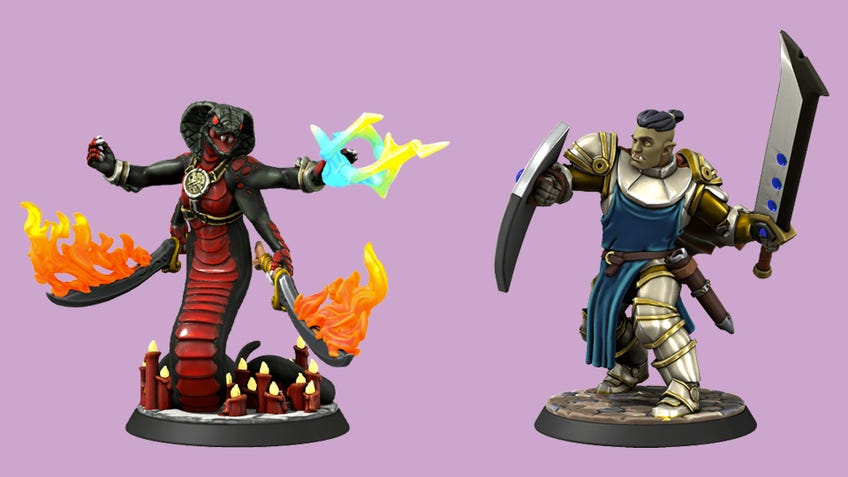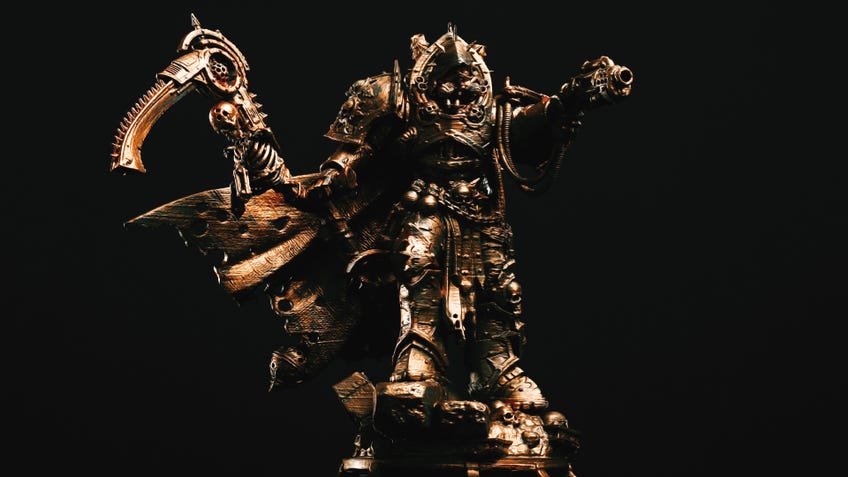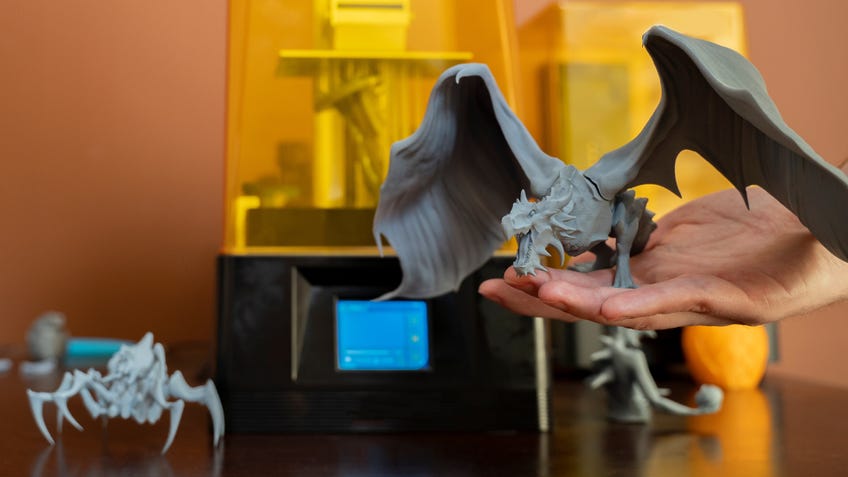3D printing is changing tabletop gaming
From custom miniatures for RPGs and wargames to fans resurrecting old favourites and creating brand new worlds.
I saw my first 3D printer years ago in a very fancy shopping mall in Tokyo. I watched enraptured as, layer by layer, an early filament printer formed a shoe out of nothing. Since then, 3D printing technology has moved on a lot, becoming more affordable and accessible than ever before. It has particularly exciting applications for the worlds of tabletop wargaming and roleplaying.
Though filament printers, that work by layering plastic from a spool, continue to have uses for tabletop gamers, especially for large terrain pieces, it is the development of affordable resin printing that has greater applications for the tabletop. Resin printers work by pulling a tray out of a pool of liquid resin that cures as it is exposed to ultraviolet light layer by layer. They can produce much finer detail without the streaking common to filament printing. There are many different resin printers on the market ranging in price from a few hundred to thousands of dollars. The printer is not the only expense; prospective printers will also need a curing station and a clean-up station, safety gear and, of course, resin.
Beyond the money, time is a factor that shouldn’t be overlooked. 3D printing is not as simple as plugging in a laserjet and hoping it will work. There is a lot of craft to be learned before you can 3D-print effectively. The maintenance of your printer, getting the setup correct and post-printing work all need to be learned. YouTube is an invaluable resource here, with guides by miniatures hobbyists such as Dana Howl, Squidmar and Miniac and 3D printing-specific channels such as The Maker's Muse, Thomas Sanladerer and 3D Printed Tabletop.
Another consideration is space. As well as not smelling pleasant, uncured resin produces hazardous fumes and irritants. Furthermore, it can be a messy process and not the kind of thing you should be doing on your kitchen table. Good ventilation is a must, in addition to protective equipment. Finally, byproducts of the washing process require proper disposal.
If your interest is just getting exciting new models and parts for your conversions and games, it’s worth paying a 3D printing company to do the work for you, which is generally not prohibitively expensive.
As the technology for 3D printers has developed, a wide range of miniature producers has emerged, selling the STL files needed to 3D print. There are broadly three places to get STLs: crowdfunding, subscriptions or direct sales.
A lot of creators make their miniatures available in a range of places, so if you don’t want to pay for a subscription or crowdfunding project for a complete range, you can usually buy an individual model on an STL store such as My Mini Factory, Thingiverse or Cults, or directly from artists’ web pages.
A bit of 'buyer beware' is prudent when using these services, as some of the sites are not very regulated and customer support can be limited. There are models on these marketplaces that are simple to print. However, there are others that do not work properly, do not come with support or need other modifications to the files to get decent prints. With that being said, 3D printing provides lots of opportunities for all sorts of tabletop games.

Tabletop roleplaying is one such area. There is a range of character design tools, such as Hero Forge and Anvl, that let you create extensively customised characters and then sell you the STL.
Furthermore, there are miniatures designers that produce models specifically for one RPG - for instance, Lair’s official range of Numenera miniatures. There are also a number of miniatures producers that offer adversaries, NPCs and monsters. The variety out there is stunning. If you want to run a cyberpunk game, there are minis for that. Something based on the Cthulhu Mythos? Perhaps Voidrealm Miniatures has what you are looking for. Cute Redwall-esque critters? Duncan Shadow’s got some. For that or truly depraved demons? Bestiarum Miniatures.
There are vast amounts of 3D-printed miniatures that can be used for tabletop games. Some are conversion bits, heroes, monsters and units for existing games, while others are miniature lines with their own unique game systems, such as One Page Rules.

It is no secret that a decent number of miniature producers are making proxies and parts that can be used in the games of wargaming giant Games Workshop. Scout the various producers and you can find a reasonable number of stand-ins - often under legally distinct names like Space Knights, Space Elves and Insect Warriors - compatible with Warhammer 40,000. I play Adepta Sororitas and - though Games Workshop’s own range is great - I get excited by the opportunity to incorporate printed parts into my lineup, both as a modelling challenge and to make my figures look unique.
Printing for Warhammer games is not without its downsides. Games Workshop doesn’t allow 3D-printed components or miniatures at lots of its official events, just as it does not allow traditional miniatures or other parts produced by third parties.
Expansion of 3D printing has also proved to be very useful in the fan revival of dead games such as Mordheim. Older specialist games like Mordheim have been out of production for a long time, making getting hold of the original miniatures hard and expensive - leaving fans with few options. 3D printing has enabled a wide range of new third-party miniatures for the gothic skirmish game, including by companies such as Heresy Lab and Monstrous Encounters. The same is true of Battlefleet Gothic, Inquisitor and Warhammer Fantasy Battle, helping to keep those systems viable.
3D printing has also opened up possibilities for indie and miniature-agnostic games - games designed to be used with miniatures by any company or even just paper cutouts. Producing miniatures using plastic injection moulds is a difficult and expensive process. Because of the expense, smaller games companies tend to have limited plastic miniature lines. 3D printing allows them to produce larger 3D-printable ranges or rely on existing archives of models to fill their games in addition to conventional miniature producers. A recent example is Reign in Hell, Snarling Badger Studios' skirmish game explicitly built to use miniatures produced by other companies. With 3D printing, game designers can produce a game and not worry about the mini lines to go along with it, confident that there will be enough figures from existing miniature companies and 3D printing for people to play their game.
What makes me most optimistic about the future of 3D printing in the hobby is seeing the collaboration between game designers and 3D miniature makers. Odd games like Turnip28 can get miniatures produced independently by artists who get the vision of the game and want to make something for it.
This is a really interesting time to be a miniatures gamer or hobbyist. The ability of small artists to create miniatures and get them to market, and for people to print on demand, expands the possibilities for both hobbyists and gamers. As 3D printing technology becomes increasingly affordable and user-friendly, more people will find new uses and its place in the world of tabletop gaming will only grow.



